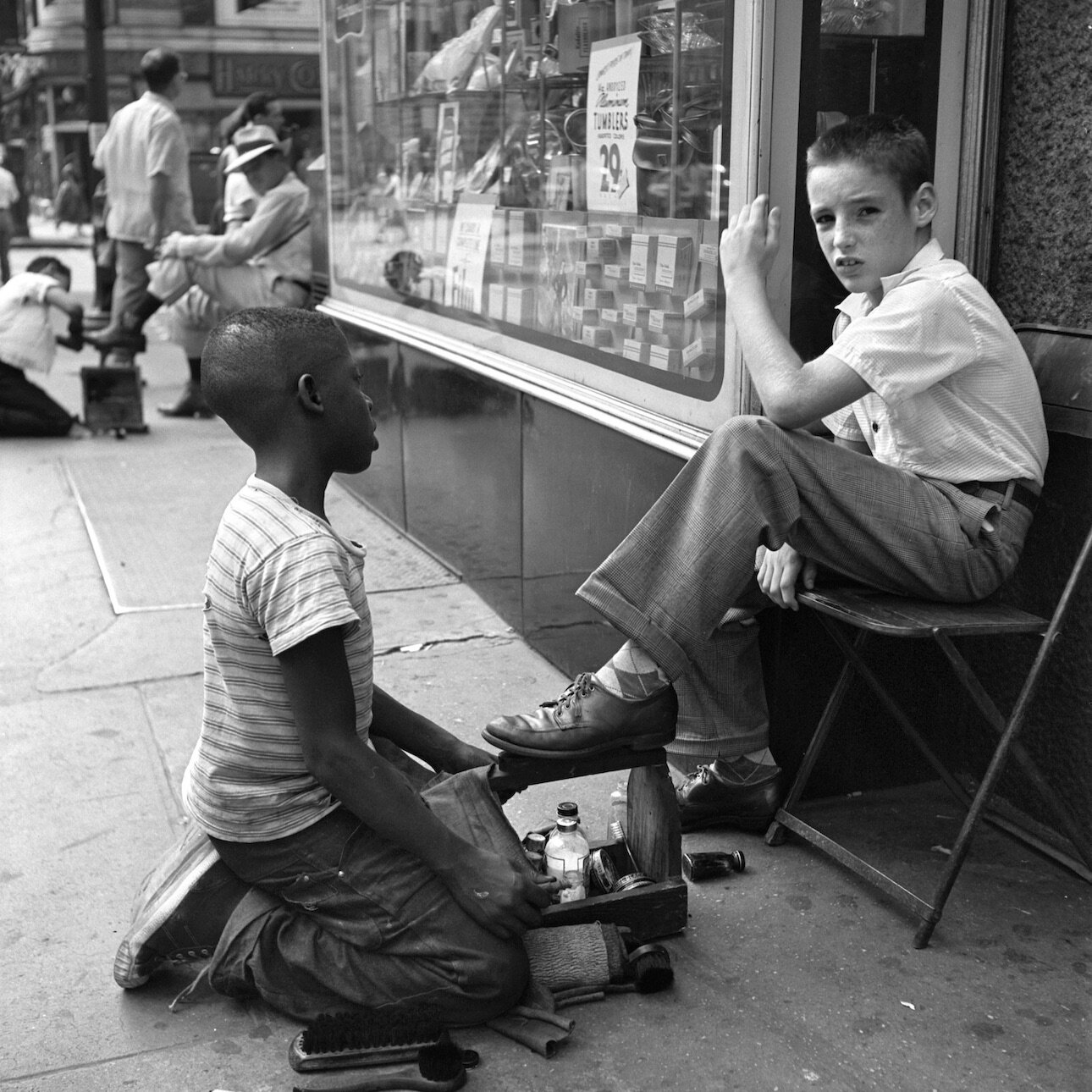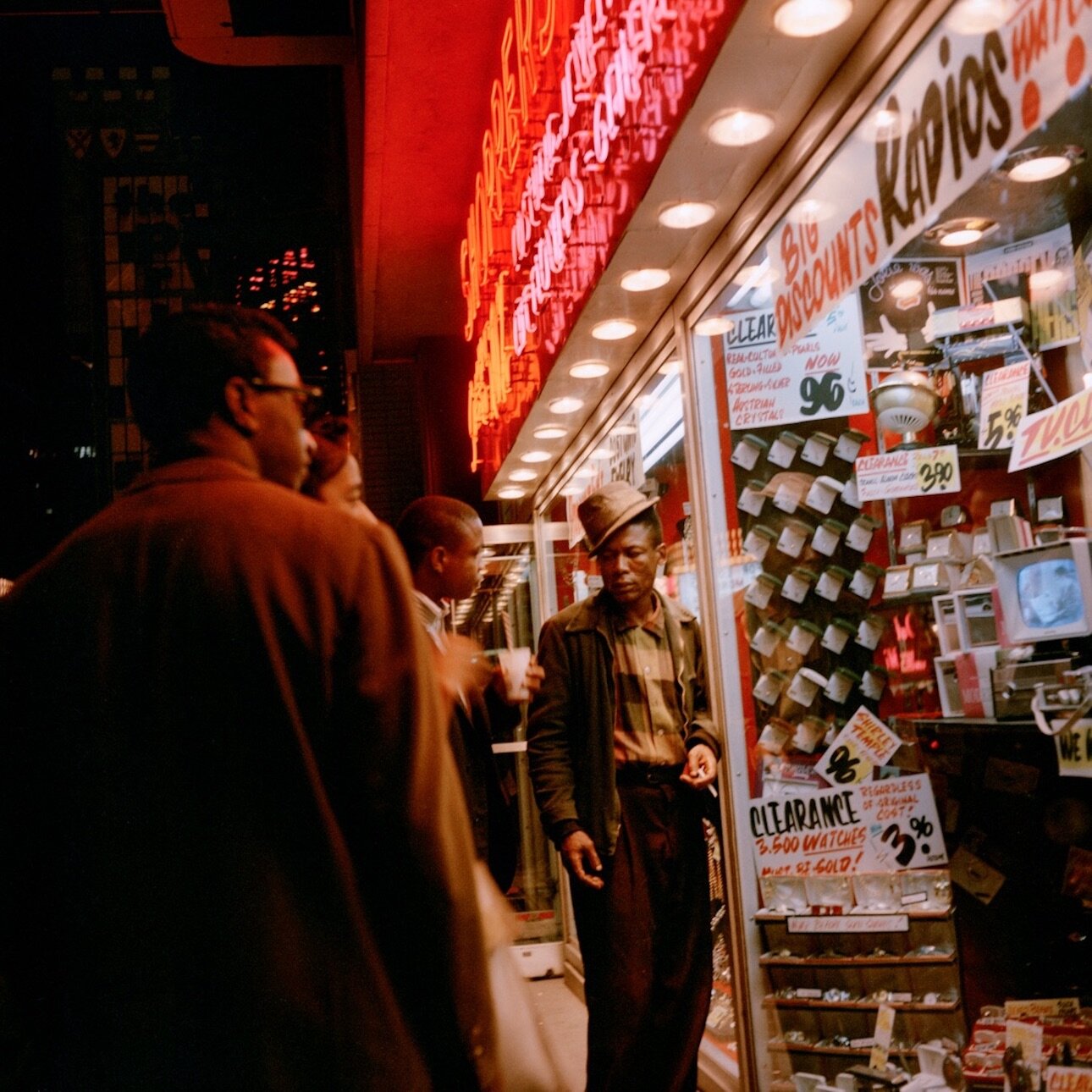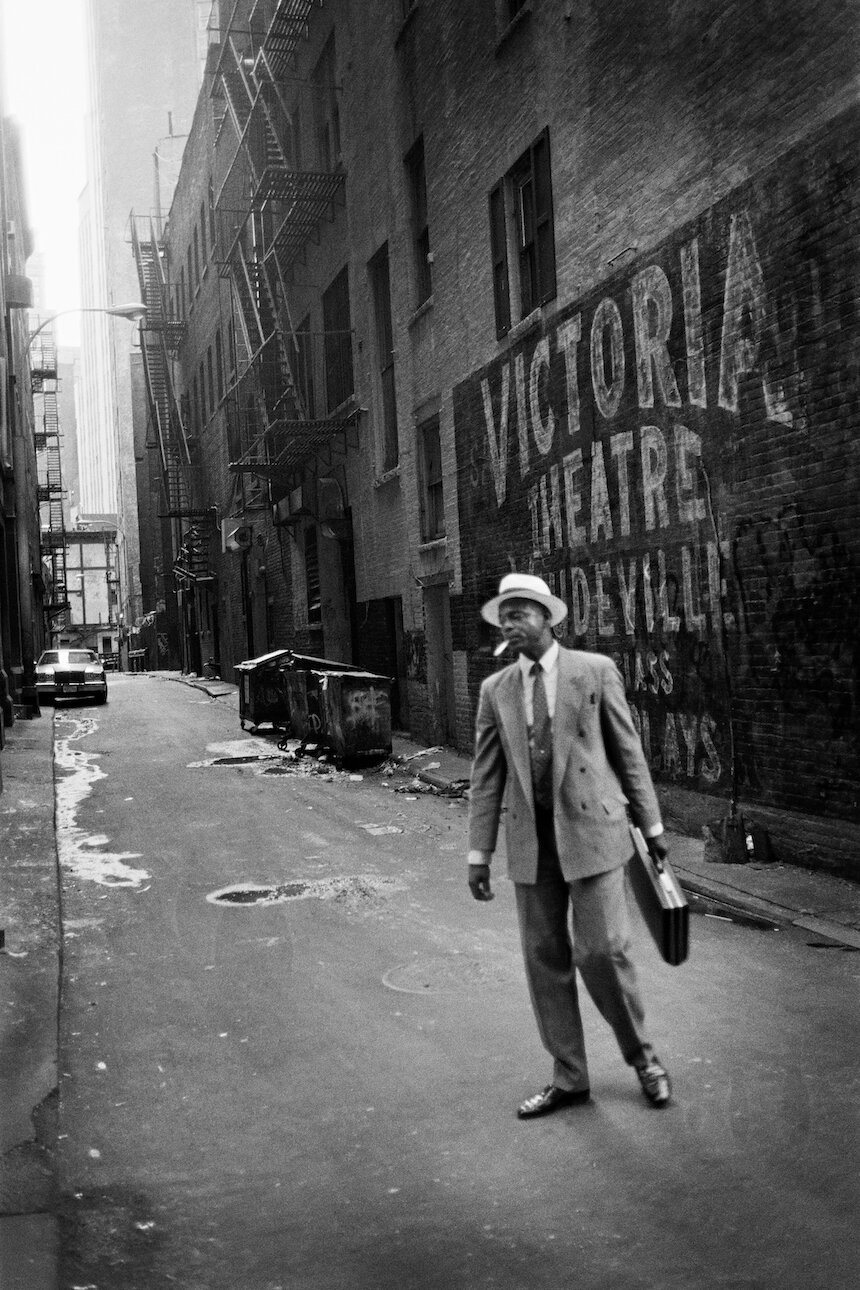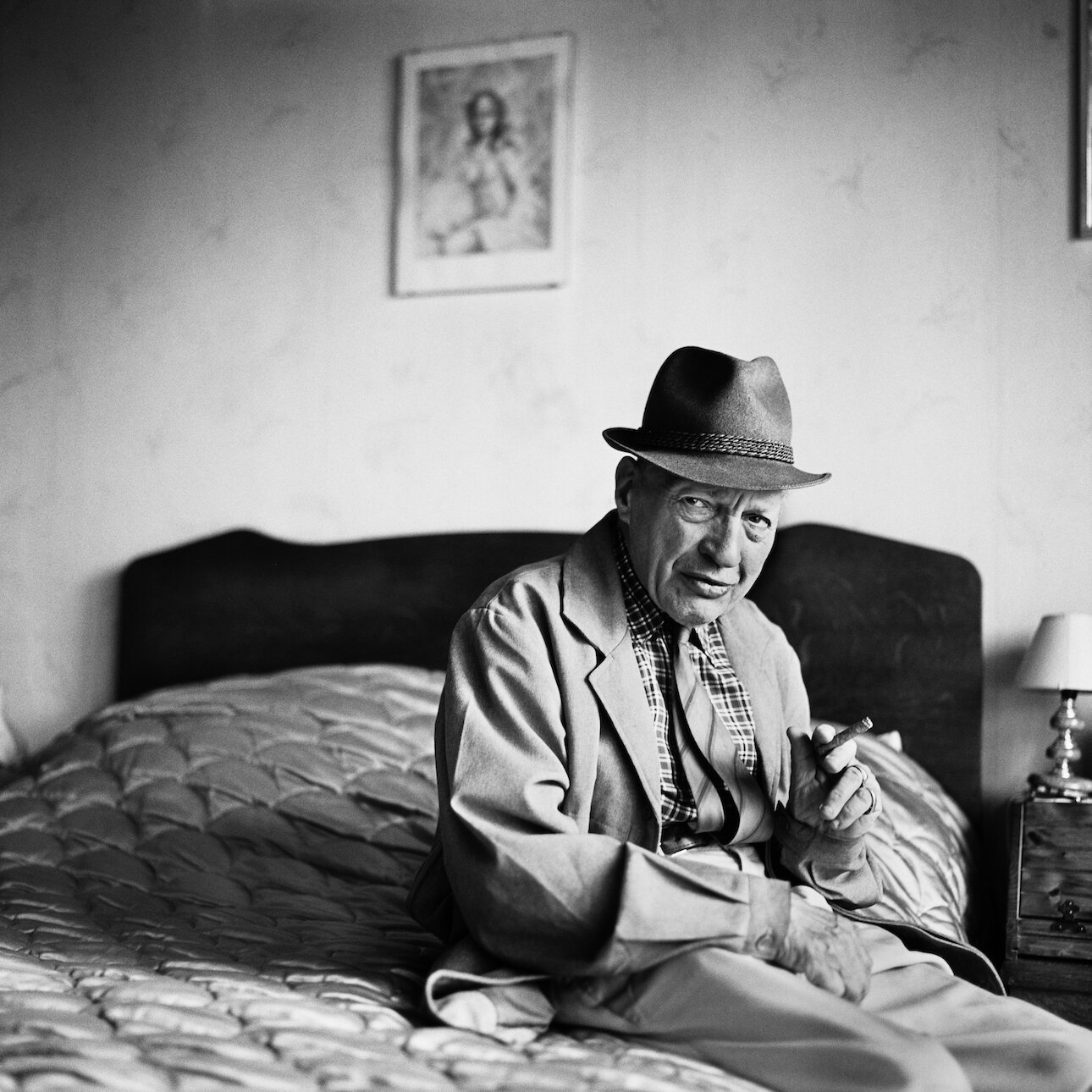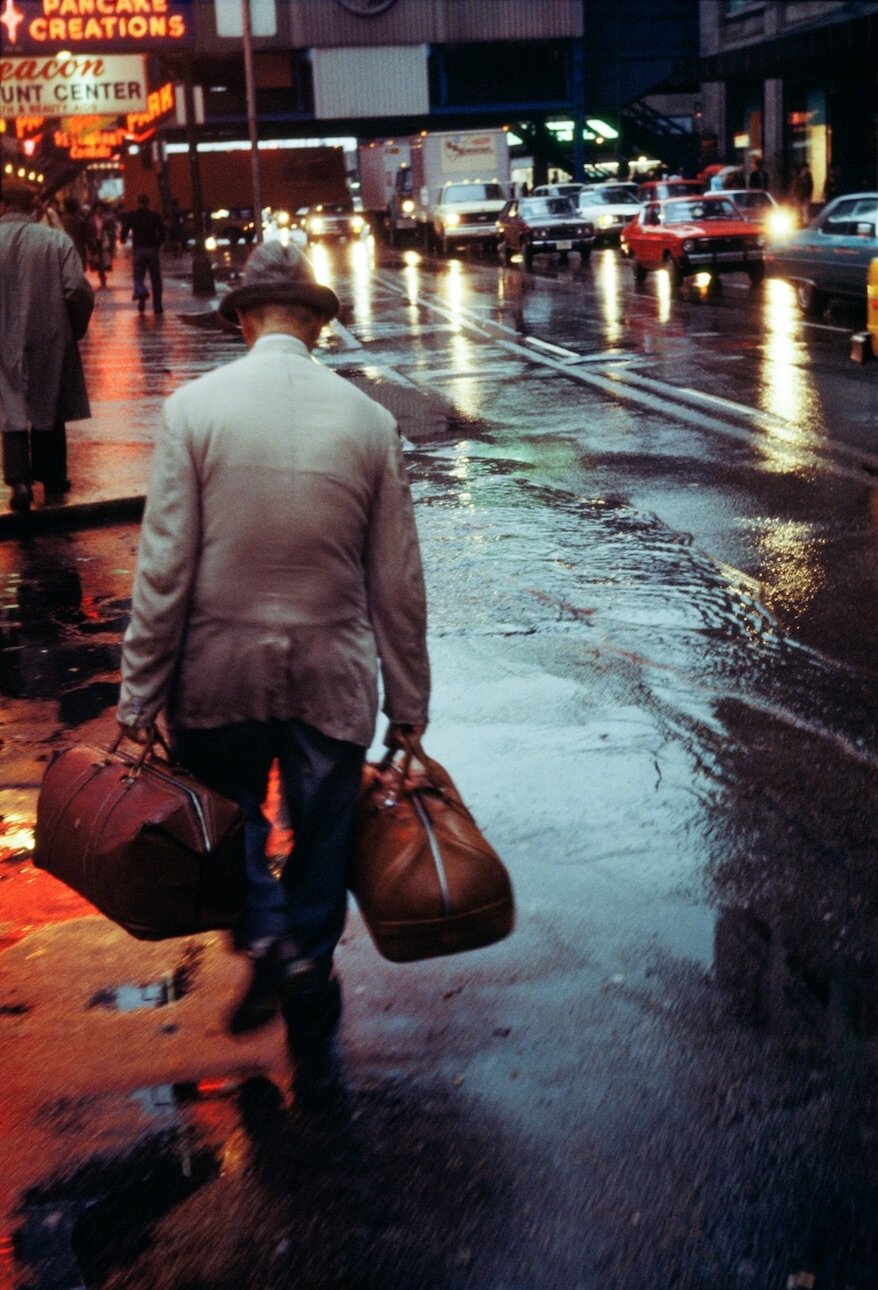Exhibition Review: Vivian Maier and Stephan Vanfleteren: Capturing Life
New York, NY, 1954 © Vivian Maier
Exhibition Review: Vivian Maier and Stephan Vanfleteren: Capturing Life
Gallery Fifty One, Antwerp, Belgium
May 8 – July 10, 2021
Words by Trevor Bishai
Many have heard the unique story of Vivian Maier’s rise to fame: nobody in the photography world knew who she was until two years before her death, when a collector, John Maloof, stumbled upon her work after it was auctioned from a storage unit Maier was renting. Prior to this discovery, Maier’s photographs were not published at all; even some of her negatives were never developed. For close to forty years, Maier worked as a nanny in Chicago and had no claim to the higher echelons of photography or fine art.
Chicago, Illinois, 1960s © Vivian Maier
The elusiveness of Maier’s lifelong photographic practice is no surprise; once we look at her photographs, each of them seems to be taken in the most discreet manner possible. The street photography aesthetic, which Maier was most famous for, aims to capture an authentic, unscripted scene and hence prioritizes a certain invisibility of the photographer. Using a square-format Rolleiflex camera, her camera sat at her waist, providing an element of disguise that one might not be granted while squinting into the viewfinder of a 35-millimeter camera. In each of her photographs, people go about their daily lives without even noticing Maier’s presence—we see them making purchases at store counters, sitting in diners, or even just walking down the street. If there is any notice of Maier’s presence in the subjects’ expressions, as there is in “New York, NY, 1954,” it seems the most immediate, unbridled reaction to the presence of a camera. We don’t get the impression that she spends much time in front of her subjects before proceeding down the street.
New York, USA,1992 © Stephan Vanfleteren
In contrast to Maier’s photographs, Stephen Vanfleteren’s work bears witness to a different, more drawn-out mode of street photography, through which we grasp some evidence of a prolonged interaction with the subject. Some of his photographs are like Maier’s in their snapshot aesthetic, but others verge on portraiture. In “London, UK, 1989,” we see a newspaper-seller standing behind a stack of his merchandise looking steadily into Vanfleteren’s lens. Hands in pockets and a cigarette in mouth, the man’s expression suggests that he is very aware of Vanfleteren’s presence. Perhaps a little wary of the photographer’s intentions, we nonetheless feel as if this man may have had a conversation with him before the photograph was taken. Captured in public and depicting the quotidian, Vanfleteren’s work certainly falls into the category of street photography but exhibits a much less elusive presence of the artist than Maier’s does.
Georges, Brussels, Belgium, 2006 © Stephan Vanfleteren
Vanfleteren leaves traces of a prolonged subject-artist interaction in his photographs, which, much like the work of Dawoud Bey, elevates the subject’s presence beyond their surroundings. While much street photography treats the pedestrian like the architecture—all acting as indiscriminate components of a bustling cityscape—Vanfleteren’s visual emphasis on many of his human subjects affords them much of our attention in each image. They seem to command the moment of the snapshot, adding personality and life to the spaces they inhabit.
Although Maier’s snapshots appear more indifferent to their subjects than Vanfleteren’s, she also participates in an elevation of the subject, though by different means. In addition to providing a helpful disguise to her practice, the Rolleiflex, which sits at waist level, displays each scene from a much different perspective than eye level would. From this angle, people seem to tower over Maier, the image akin to a child’s perspective of the bustling world of adults. Maier’s perspective thus evades the condescension that might arise in the portrayal of a street scene from above, and each subject’s elevated presence captures our attention in a similar way to Vanfleteren’s street portraiture. We are prompted to study these people, observing their subtle idiosyncrasies that a posed portrait would be much more likely to hide.
Randolph street, Chicago, 1997 © Vivian Maier
Although Maier and Vanfleteren differ in their degrees of conspicuousness on the street, much more brings their work into harmony than what distinguishes them. In both artists’ work we are confronted with scenes of the quotidian, the ordinary, of people whom only a dedicated flaneur might stop to notice. Moreover, through Maier’s altered perspective and Vanfleteren’s interactions with his subject, the presence of these people is uplifted beyond the confines of ordinary life: they exude personality just as any portrait would. “Clearly driven by an urge not to forget,” both artists document the street with nuance and clarity, diving into the depths of the agora and returning with some of the most illuminating visual artifacts.


